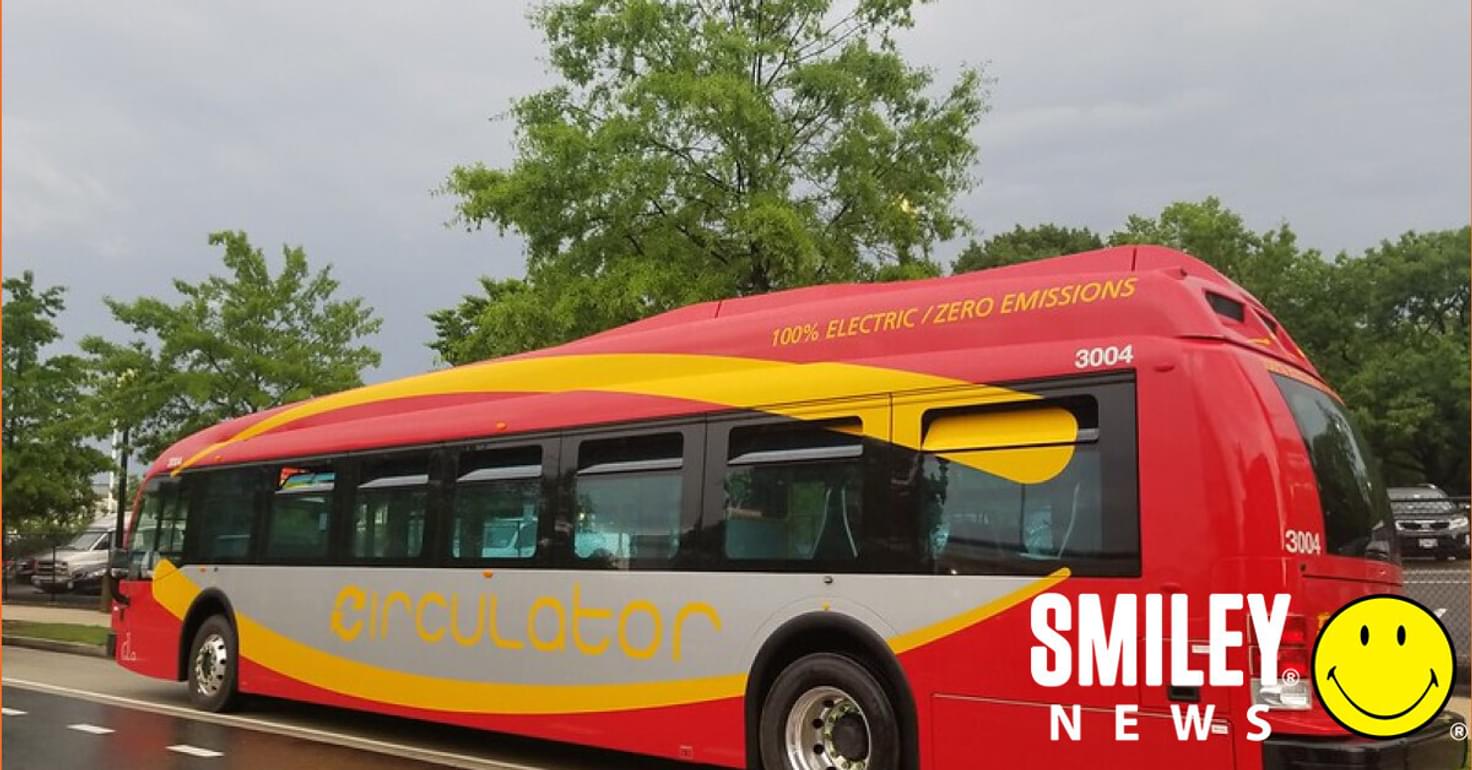
Words by Smiley Team
As climate change becomes a more present issue, many places are looking to turn to renewable energy to limit how much the planet warms in the coming years. One of the oldest and most reliable forms of that is solar.
If you want to be pedantic, the use of the sun for energy has been around since the 7th century B.C. when some enterprising people used sunlight to light fires with magnifying glass materials. But solar power, as we know it, came in 1954 when solar cells were created by Daryl Chapin, Calvin Fuller, and Gerald Pearson.
Today, as we expand solar capability, and move to more renewable sources, cities have turned to solar to power their buildings, and are even moving to power much of their public transportation with it.
Washington D.C. is one such city, as they’ve been expanding their fleet of electric buses since 2018, and those buses are soon going to be getting an upgrade.
[Sign up here to receive a weekly dose of positive news in your inbox]
That upgrade will be in the form of a microgrid solar system. The system will launch in September 2022, powering a growing number of electric buses on Montgomery County’s Ride On transit system. The Silver Spring facility will be the first in the D.C. area to use the microgrid technology and one of the earliest of its kind nationwide.
The way it works is that the buses will use electricity that originates from solar panels at a bus depot rather than the traditional electricity grid.
“This is the kind of thing we have to do to meet our climate goals,” Montgomery County Executive Marc Elrich said. “The grid is clean, so the cleaner energy we use as a source, the more likely we are to be successful in reducing our total greenhouse gas emissions. That’s the goal.”
The push for the Maryland project stems from the county’s climate goals, which include converting its publicly owned vehicles to zero-emission by 2035. The county is expecting to add 10 electric buses to its existing fleet of more than 370 gas-powered buses by the end of the summer and expects to buy 100 more by the end of 2023.
“Investing in a zero-emission bus fleet will contribute significant environmental and health benefits to the region by reducing greenhouse gas emissions and improving regional air quality,” said Paul Wiedefeld, Metro’s general manager, in a statement.
DONATE: If you want to support an organization doing a lot with solar, We Care Solar is utilizing solar energy to provide lighting and energy for birthing facilities and “promotes safe motherhood and reduces maternal mortality in developing regions by providing health workers with reliable lighting, mobile communication, and medical devices using solar electricity.”
SUPPORT: Find ways to cut electricity use in your own life. Maybe lower your thermostat for a day, or bike for a week instead of driving.